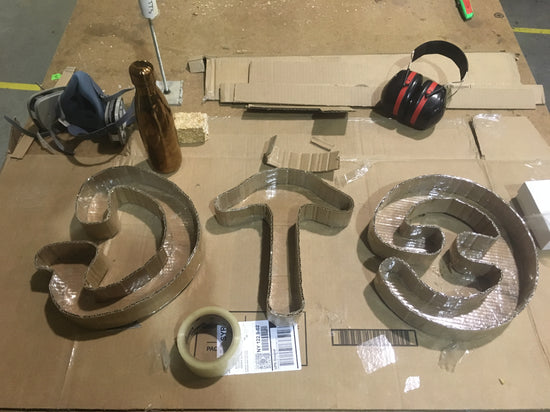During the conference, there was discussion around Biodesign as a new field, what makes it unique, and how young professionals can get into the field. This field touches on many industries and is fueled by a desire to solve urgent issues. The panelists asked the question of whether it is bravery or curiosity of other disciplines which brings people to Biodesign. The panelists responded with “perhaps it's a combination of fearlessness and open-mindedness, and that those studying in the field must have trust in themselves because what is being done does not have a path yet.” Biodesigners have hope and drive because, despite this being a new way of working, requiring lots of experimentation, the problems we are trying to solve are the same ones that we have created.

Left to right: Theanne Schiros- FIT, Aleksandra Gosiewski- Algiknit, Orkan Telhan- UPenn, Jiwon Woo- Hypha Design, and Matilda McQuaid- Cooper Hewitt
Panelists advised students to question why your project matters to you, beyond just “design.”
- Think about the world in new ways, through the lenses of other studies, through the values of the environment.
- When working on a project “stop worrying and just do.”
- During this process, openly share ideas and slowly you will begin to reveal little bits of truth.
- Take on a systems approach to thinking, look at the amount of energy that goes into a process, the answer is not always a new material.
- “Question traditional metrics of success,” because we are working together in new ways.
With all of that information the top nine teams were narrowed down for BioDesign Summit Day Two:
btilix - University of Toledo
Ecolastane - Fashion Institute of Technology
GIY Bio Buddies - Nest Makerspace
Symbiome - RMIT University
Denimaize - University of Pennsylvania
MORPHO - Harvard University
PseudoFreeze - Universidad de los Andes
Mite be Poppy Seeds - Rutgers University
Enzer - RMIT University
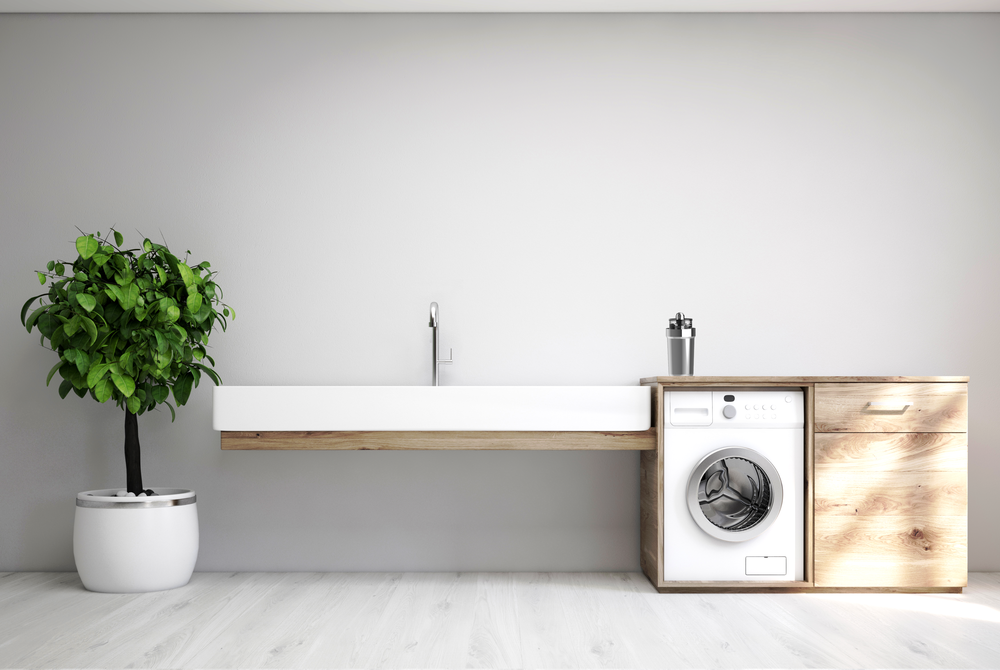 Image: Enzer Illustration
Image: Enzer Illustration
On day two, all judges and guests were in the same room listening to and communicating with the same teams. Judge’s questions often revolved around the balance between the design process and science, cultural impact, accessibility, and target markets.
Cultural questions were asked of nearly all the teams, which I believe is because the results of Biodesign can feel unfamiliar to consumers and the process to normalizing it may not be immediate. One consideration was if people would be ok with using living probiotic bacteria for cleaning from Btilix. For Ecolastane, is it ethical and natural to grow the oyster's protein if there are not enough naturally? GIY Bio Buddies found they had to mask the smell of SCOBY for their product to be more approachable. Symbiome found that the appeal of their building was in the long term effect it has, but people will have to look past the upfront cost and pollution of construction. It was also questioned why Morpho’s product put the responsibility of cleaning pollution into the consumers' hands, and if that is further allowing companies to create toxic products. Mite be Poppy Seeds uses humor as an approach to make people more open-minded and bugs more socially acceptable. All these angles, culturally, socially, financially, and ethically, are important for designers to consider especially in the realm of Biodesign as we enter a new way of thinking and creating with nature.
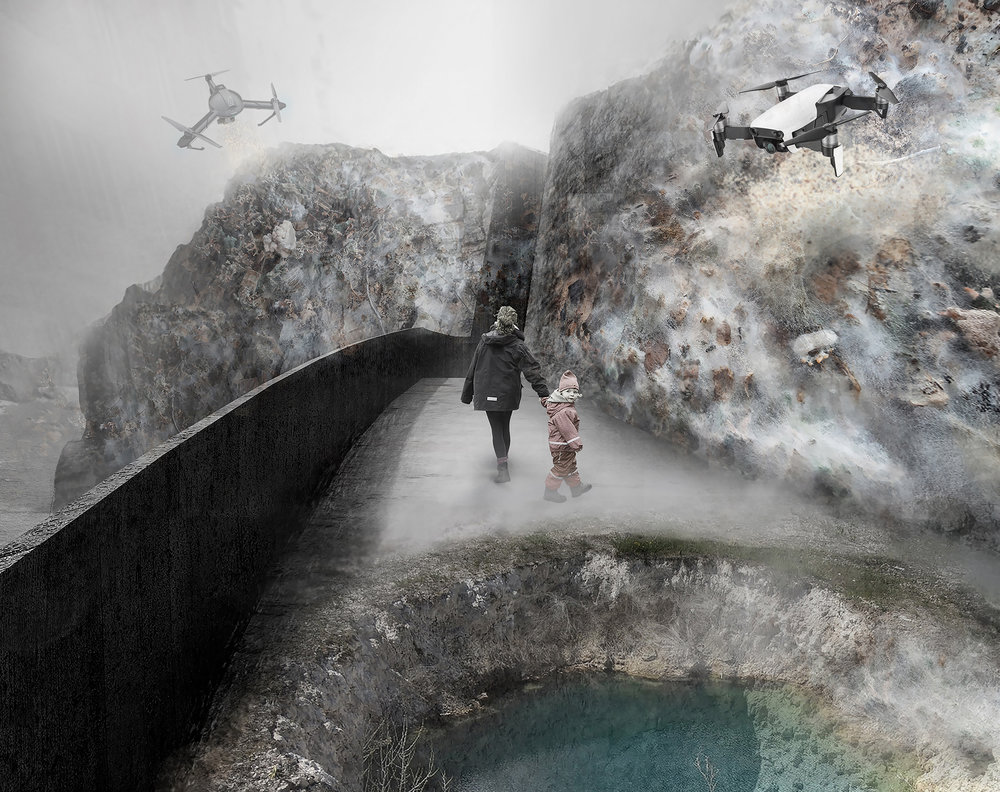
Image: Mycokarst Illustration
Another large question most groups were asked was about accessibility and logistics. Teams that were using a potentially limited resource were asked if there would be enough to meet consumer needs. Large scale projects were asked about cost. Teams were also asked to make sure effective use of our resources were used so that we were not using our food to grow organisms. Judges also wanted to make sure teams were getting to the root of the problem and not creating a temporary fix. Btilix was asked to explore why bacteria were spreading in the first place and Morpho was asked to look at a way to reduce the toxins released by furniture rather than clean up the aftermath.
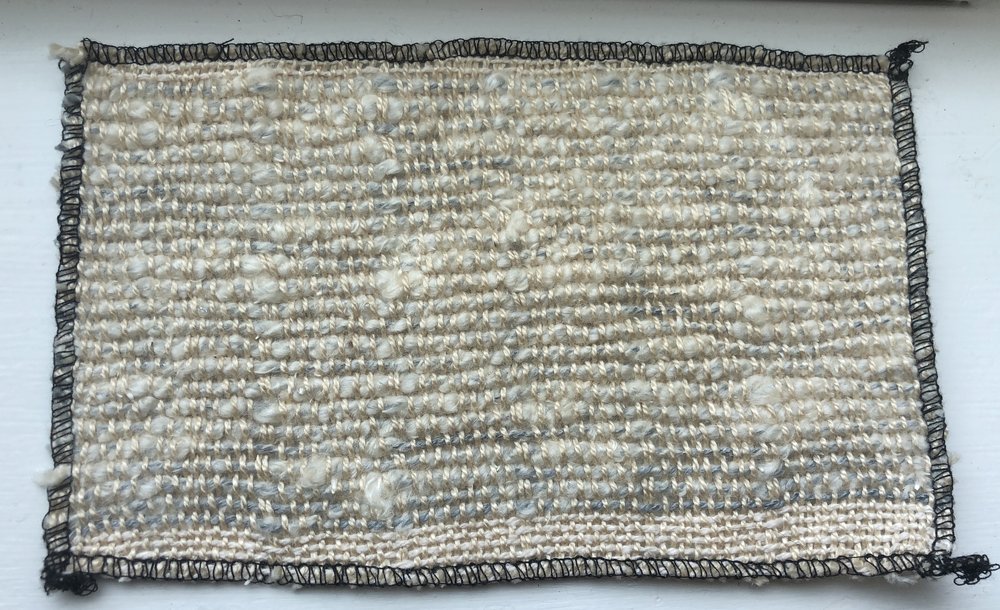
Image: Denimaize Prototype
Finally, teams worked to find out where their product would fit best in the market. GIY Bio Buddies found that they needed to target kids and parents and are looking to expanding into the classroom. Denimaize is making sure that corn farmers have an incentive to give them the extra material by paying the farmers for the husks which keeps the cost for consumers low. Enzer is looking for ways to incentivize consumers to buy their product, as well as scaling up to an industrial application.
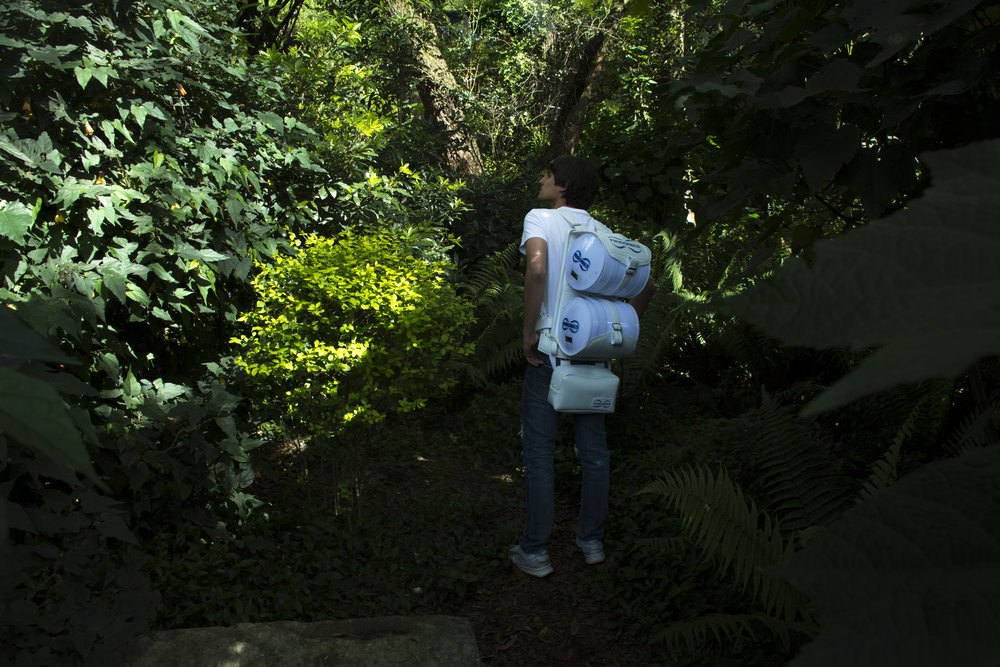 Image: PseudoFreeze Prototype
Image: PseudoFreeze Prototype
After all the teams had the chance to present and answer questions judges decided that Pseudofreeze has the overall best use of science, engineering, and design and awarded them the Glass Microbe. Pseudofreeze is addressing the lack of accessibility to vaccines that need to be refrigerated in many parts of the world. The current solution is to carry the medicine in a cooler, but this is very limiting. Pseudofreeze has found a way to use the protein from pseudomonas syringae bacteria to freeze water. They used this to create a modular, lightweight, easy to stack and easy to carry in a backpack, system that only requires the protein and cool water, to keep vaccines cold for a week. The system is made of a cylinder inside of a case allowing the contents to be mixed again and requires no electricity. This greatly increases accessibility to important vaccines in parts of the world that do not have refrigeration.
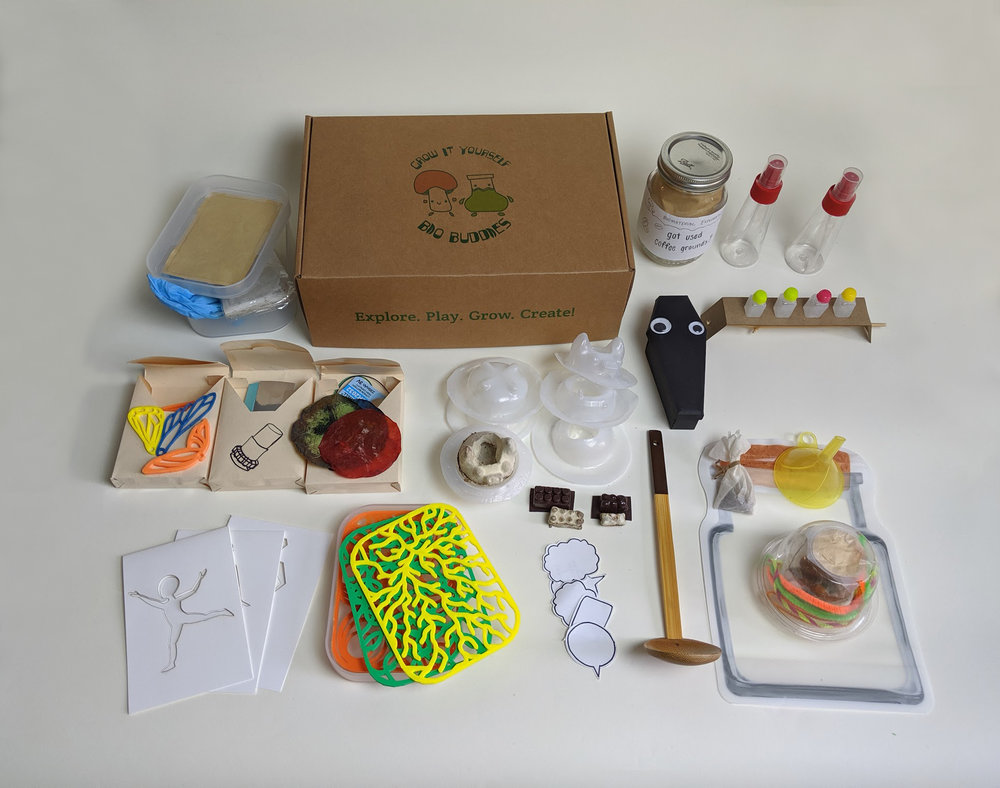 Image: BioBuddies Kit
Image: BioBuddies Kit
GIY Bio Buddies was the Runner Up and received the Corinne Takara, for Outstanding Instructor Award, and the Best Field Research. Their product in a grow kit using mycelium and SCOBY for kids to design their own toys. GIY BioBuddies is looking to solve the lack of creativity in children and bring them back to making. With their kit kids with grow, create, and explore. This brings kids back to hands-on learning, exposes and familiarizes them with biomaterials, and lets them design with unlimited creativity.
- Outstanding Science was awarded to Mycokarst who aims to repair sinkholes with mycelium.
- Outstanding Presentation was awarded to Death on Mars who imagined how we may deal with death on another planet in 2130.
- Outstanding Social Critique was awarded to The Other Townsend who tackled the issue of AI face recognition and targeted advertising.
- The ORTA Prize for Bioinspired Textiles Processes was awarded to Enzer who used an enzyme to find a way to degrade microplastics in washing machines.
- The Stella McCartney Prize for Sustainable Fashion was awarded to Flora Fur who are using milkweed for textiles, preventing the use of animal fur and saving monarch butterflies.
Sources:
https://biodesignchallenge.org/summit-2019
Watch the BDC Day 2 Live Stream:
https://www.youtube.com/watch?v=JDe3qTGY1n8
Banner Image: PseudoFreeze
Follow all the branches of Ecovative Design:
ecovative
grow.bio
mushroompackaging



